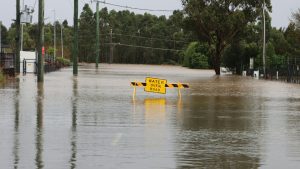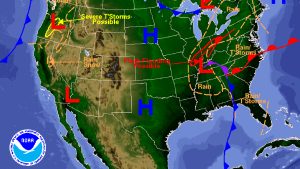What Is Weather Radar?
Weather radar is a critical tool used by meteorologists to detect and track precipitation, storm structures, and severe weather conditions. It works by sending out pulses of microwave energy that bounce off precipitation particles like raindrops, snowflakes, or hailstones. The radar then collects the returning signal (echo) and creates a visual representation of what’s happening in the atmosphere.
How Does Radar Work?
- Transmission: A radar system emits bursts of radio waves into the atmosphere.
- Reflection: These waves hit precipitation particles and scatter.
- Reception: The radar dish receives the returning signals (echoes).
- Display: A computer processes the data into images showing precipitation intensity, movement, and type.
Understanding Radar Colors
Radar imagery is color-coded to indicate the intensity of precipitation:
- Light Green/Blue: Light rain or snow
- Yellow/Orange: Moderate to heavy rain
- Red: Very heavy rain, strong storms
- Purple/White: Hail or extremely intense precipitation
These colors help forecasters and the public quickly assess storm severity.
What Is Doppler Radar?
Doppler radar is an advanced type of radar that not only detects precipitation but also measures motion within the storm. It uses the Doppler effect to detect wind patterns, including rotation that could indicate a tornado.
Doppler Radar Can Show:
- Wind direction and speed
- Areas of rotation (possible tornadoes)
- Speed and movement of storms
Radar Limitations
While radar is powerful, it has some limitations:
- Can’t see low to the ground at long distances (due to Earth’s curvature)
- May struggle to detect light snow or drizzle
- False echoes can occur from birds, insects, or mountains
How Storm Chasers Use Radar
Storm chasers rely on radar to:
- Track storm movement in real-time
- Identify features like hook echoes, inflow notches, and hail cores
- Position themselves safely near supercells or tornado-producing storms
Many use mobile apps or portable radar software connected to live feeds from the National Weather Service or private radar networks.
Conclusion
Weather radar is one of the most vital tools for storm prediction and public safety. Learning to read radar images helps both meteorologists and weather enthusiasts make sense of approaching storms and prepare accordingly.




